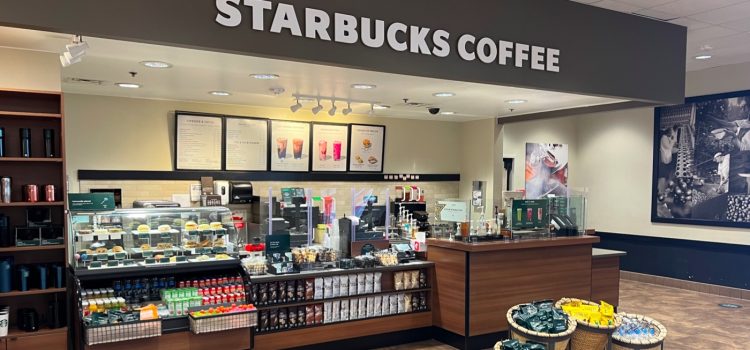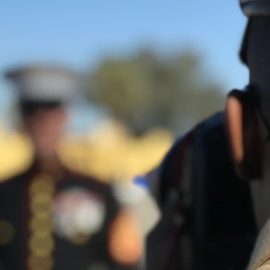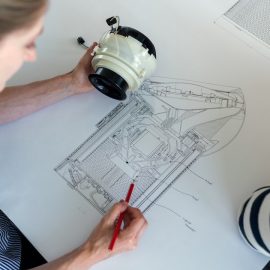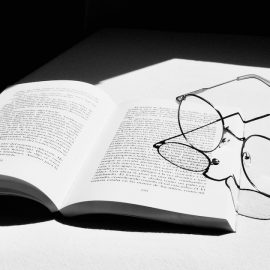

This article is an excerpt from the Shortform book guide to "Onward" by Howard Schultz. Shortform has the world's best summaries and analyses of books you should be reading.
Like this article? Sign up for a free trial here.
What makes the Starbucks store design stand out? When did Starbucks change the aesthetic of its stores?
In the 2000s, Starbucks went through a technological and aesthetic overhaul. In addition to receiving semiautomatic coffee machines and laptops, Starbucks stores also got a new look for a cozier atmosphere.
Here’s how former CEO Howard Schultz rationalizes the decisions behind these innovative changes.
The Polished Store Design and Operations at Starbucks
Schultz explains that Starbucks was behind in several ways in the mid-late 2000s. Aside from the cold aesthetic of the Starbucks store design, the company was using outdated technology that was clunky and cumbersome, which slowed down customer service and impeded employees from forming relationships with customers. To address this issue, Schultz gave each store a new laptop and acquired two new machines: the semiautomatic Clover, which created flavorful cups of brewed coffee and could be used to expand Starbucks’ repertoire of customizable brewed coffee drinks, and the semiautomatic Mastrena, which created espresso drinks and was sized so that employees could more easily interact with customers while making their drinks.
(Shortform note: Since Schultz’s initial commitment to update in-store technology, Starbucks has continued to refresh its technology to keep up with the ever-changing demands of customer service. For example, Starbucks has introduced a new Clover machine to speed up the coffee-making process and cut down on paper, water, and carbon waste, upgraded the Mastrena’s capabilities to accommodate a higher volume of coffee orders, and provided stores with iPads they can use to manage the flow of mobile orders.)
Schultz was also displeased with the design of Starbucks stores because they didn’t create the warm atmosphere needed for a successful third place. To fix this, Schultz rehired a former head of store development whom he considered a true innovator to redesign Starbucks stores. The new designs were centered around sustainability and featured eco-friendly elements like energy-efficient lighting and salvaged wood. Schultz also opened two experimental coffee shops that were as different as possible from the Starbucks brand in every way (including store names, menus, operating procedures, and designs). This enabled Starbucks to experiment with potential future directions in a safe way, without making major changes to Starbucks’ brand.
(Shortform note: As Americans transition from spending their free time in third places to spending most of it in digital spaces, Starbucks is considering redesign options to suit consumer needs. For example, in 2021 Starbucks partnered with Amazon to create a store where customers could pick up mobile orders without interacting with employees, and the chain has also expanded drive-thru and delivery-only store designs. But Starbucks continues to emphasize sustainability in its store design—for example, it aims to certify 10,000 stores as “Greener Stores” by 2025. Starbucks also continues to experiment with different coffee shop experiences—for example, it’s opened a handful of Roasteries that serve exclusive products.)
Additionally, Schultz decided to experiment with a new management technique he calls the “Lean program.” The Lean program involved asking employees to take the initiative to solve problems they observed in their stores, rather than only acting on top-down operating instructions from Starbucks’ corporate headquarters. This management method was tested in a few stores, where it resulted in significant improvements in both customer and employee satisfaction. Some changes that employees made to their local stores as part of this program were even scaled nationwide—for example, Starbucks changed its guidelines for how often to brew new coffee based on one store’s experimentation with this process.
(Shortform notes: In No Rules Rules, Reed Hastings explains why asking employees to take more initiative worked at Netflix: By giving employees greater decision-making power, Netflix equipped them with greater autonomy and accountability. This enabled them to apply innovative ideas and get results more quickly, since employees no longer had to wait for leaders’ recognition or approval to make needed changes (this problem is known as a bottleneck). This may also explain why Starbucks’ Lean program was so effective. However, its results are only as consistent as Starbucks employees are—for example, baristas explain that in some stores, coffee isn’t brewed as often as the Lean program’s experimentation showed it should be.)

———End of Preview———
Like what you just read? Read the rest of the world's best book summary and analysis of Howard Schultz's "Onward" at Shortform.
Here's what you'll find in our full Onward summary:
- Why Starbucks CEO Howard Schultz left and later returned to the company
- Schultz’s three-part strategy that saved Starbucks from potential ruin
- Why millions of people love Starbucks’ coffeehouse experience






